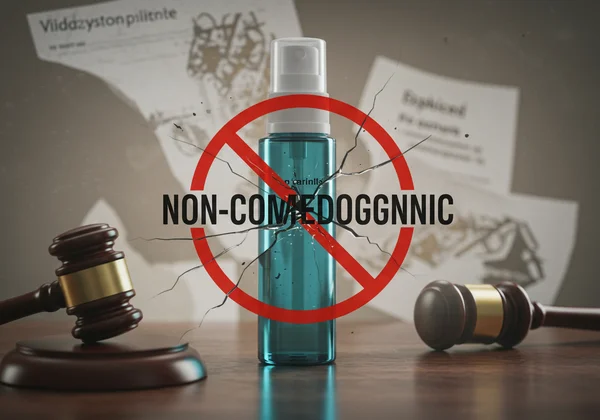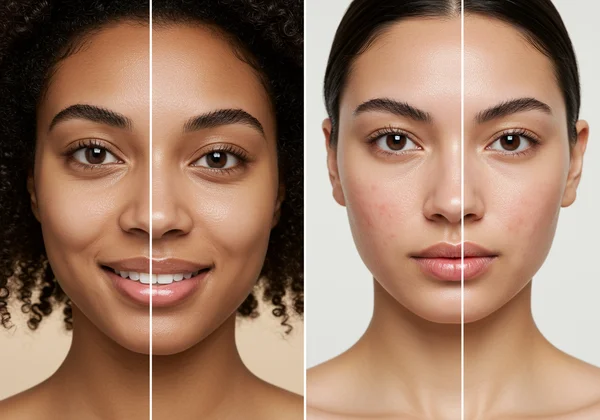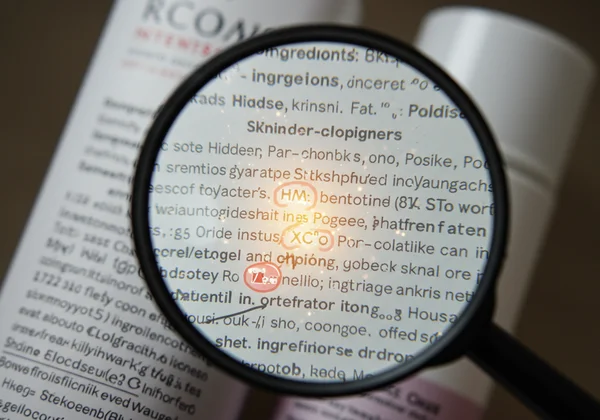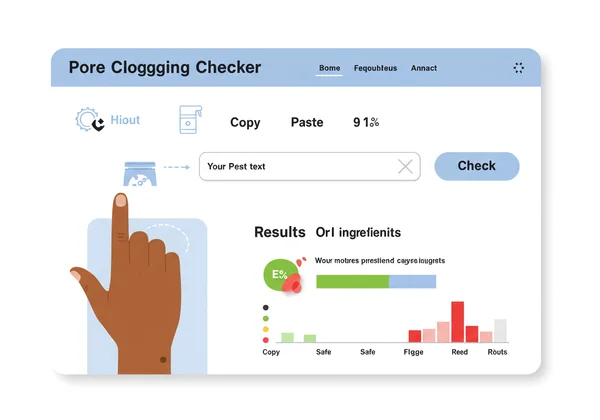Is "Non-Comedogenic" Reliable? Use Our Pore Clogging Ingredient Checker for Acne-Prone Skin
For many, the promise of 'non-comedogenic' products has fallen flat, leading to continued frustration with breakouts. Many people fighting acne feel betrayed by this popular marketing claim. Are you frustrated by breakouts despite using "non-comedogenic" products? This article will peel back the curtain on this confusing term, expose its limitations, and introduce you to a powerful, science-backed pore clogging checker that puts true control back into your hands. It's time to move beyond hopeful labels and toward real results with our free tool.
What Does "Non-Comedogenic" Actually Mean?
The term "non-comedogenic" is plastered on everything from moisturizers to foundations, promising not to clog pores (comedones). However, the definition and testing behind this claim are far less concrete than most consumers believe. Understanding its origins helps reveal why it's not the foolproof guarantee we wish it were.
The Origin of the Term: Animal vs. Human Testing
The concept of comedogenic testing originated decades ago, most famously using the rabbit ear assay. In these tests, ingredients were applied to the inside of a rabbit's ear, which is highly sensitive and prone to forming blackheads. If the rabbit's ear showed significant pore blockage, the ingredient was deemed comedogenic.
While this was a starting point, it has major flaws. Rabbit skin is not human skin, and it often overreacts compared to our own. Modern methods sometimes involve human patch testing, but these studies are not standardized across the industry. Even when human testing is conducted, significant variables remain. Tests might be performed on the back, which has different pore characteristics than the face. The duration of the study might be too short to show delayed comedogenic effects. Ultimately, without a unified, transparent standard, one brand's 'non-comedogenic' test could be vastly different from another's, rendering the term inconsistent and often unreliable.
Labeling Loopholes: Why Regulation is Lacking
Here is the most critical piece of information: the term "non-comedogenic" is not regulated by the FDA or any other major governing body. There are no official standards or mandatory tests a brand must pass to use this label. A company can simply decide its product is unlikely to clog pores and print it on the packaging.
This lack of oversight means the claim can be based on outdated data, minimal testing, or simply the absence of a few well-known "bad" ingredients. It's more of a marketing guideline than a scientific promise, which is why a reliable comedogenic ingredient checker is so essential for anyone serious about their skin's health.

The Truth About the Non-Comedogenic Myth
Relying solely on the "non-comedogenic" label is a common skincare mistake. The reality is that skin health is deeply personal, and a single label cannot account for the complex factors that trigger acne. This is where the non-comedogenic myth begins to crumble under scrutiny.
Individual Skin Reactions: One Size Doesn't Fit All
Your skin is unique. An ingredient that works wonders for one person might be a primary acne trigger for another. Factors like genetics, skin type (oily, dry, combination), hormone levels, and even environmental conditions play a massive role in how your skin reacts.
A product labeled non-comedogenic might be formulated to be safe for the "average" person, but it can’t predict your individual skin sensitivity. Consider a hypothetical scenario: Two friends, both with acne-prone skin, decide to try the same highly-rated 'non-comedogenic' moisturizer. Friend A sees a noticeable improvement in hydration with no new breakouts. Friend B, however, starts experiencing small, persistent bumps along their jawline after two weeks. The product wasn't necessarily 'bad'—it simply contained an ingredient that Friend B's unique skin chemistry reacted to negatively. This common experience highlights why a personalized analysis is far superior to a generic label.

Ingredient Synergy: How Products Interact in Your Routine
Skincare isn't just about one product; it's about the entire routine. The way ingredients interact can change their overall effect. A single ingredient might be harmless on its own, but when combined with others in a specific formula—or layered with other products in your regimen—it could contribute to clogged pores.
The "non-comedogenic" test, even when performed, usually assesses ingredients in isolation. It doesn't account for the final formula impact or the complex cocktail of products you apply daily. A smarter approach is to analyze the full ingredient list of every product you use with a comprehensive skincare ingredient checker.
Why "Is Non-Comedogenic Reliable" Isn't a Simple Yes or No for Clear Skin
The question of reliability goes deeper than just marketing claims. Several scientific factors determine a product's potential to clog pores, and the non-comedogenic label oversimplifies this complex issue, often providing a false sense of security.
Concentration Matters: A Little Bit of Bad vs. A Lot
The ingredient percentage in a formula is crucial. An ingredient known to be moderately pore-clogging might be perfectly fine at a very low concentration (less than 1%). Conversely, an ingredient with a low pore clogging rating could cause issues if it's one of the top five ingredients in a product.
The non-comedogenic label doesn't provide this nuance. It’s a simple yes/no stamp that ignores the critical role of concentration. This is a significant blind spot that leaves many users confused when a "safe" product causes breakouts.
Hidden Pore-Clogging Ingredients: Beyond the Obvious
Many people know to watch out for obvious culprits like Coconut Oil or Isopropyl Myristate. However, there are hundreds of other hidden pore cloggers that can fly under the radar. These can include certain emulsifiers, fatty acids, and even some "natural" oils that sound harmless. For instance, while some silicones are inert, heavier ones can trap debris and sebum in some individuals. Certain 'natural' butters like Shea Butter can be a holy grail for dry skin but problematic for those prone to congestion. Even seemingly beneficial ingredients like algae extracts can sometimes trigger breakouts. Keeping track of this ever-growing list of nuances is nearly impossible for the average consumer.
A thorough ingredient list analysis is the only way to catch these potential offenders. Without it, you are essentially guessing and hoping the manufacturer did the due diligence for your specific skin type—a risk that often leads to disappointment. Stop guessing and check your ingredients for free.

How Our Pore Clogging Checker Provides Real, Reliable Answers
If you can't trust labels, what can you trust? The answer is data. By moving away from marketing claims and toward objective, science-based analysis, you can finally gain the clarity needed to build a truly acne-safe routine. Our tool empowers you to do just that.
Beyond the Label: Our Science-Backed Ingredient Database
Our pore clogging checker isn't based on marketing trends or outdated tests. It cross-references your product's ingredient list against a comprehensive ingredient database built on decades of scientific research and dermatological studies. The tool instantly flags ingredients with a known potential to clog pores, providing the objective insight that labels lack. This data-driven approach removes emotion and marketing fluff from the equation. Instead of wondering if a brand's claims are trustworthy, you get a straightforward analysis of what's inside the bottle. It empowers you to become your own skincare detective, saving you time, money, and the frustration of trial-and-error.
Your Personalized Skincare Safety Net for Acne-Prone Skin
Consider our tool your essential guide, helping you confidently navigate product choices. It helps you make informed decisions before you buy a product, preventing costly mistakes and frustrating breakouts. It's the ultimate resource for anyone with acne-prone skin who wants to take a proactive approach to acne prevention and build a routine that truly works for them.
Simple Steps to Analyze Your Products (CTA)
Empowering yourself with this knowledge is incredibly simple. You don't need to be a cosmetic chemist or memorize hundreds of ingredients. The process takes less than a minute:
-
Copy: Find the full ingredient list of any skincare, makeup, or hair care product online or on its packaging.
-
Paste: Paste the entire list into the input box on our homepage.
-
Check: Click the "Check" button to get your instant, color-coded results.

Ready to see what’s really in your products? Analyze your products now and take the first step toward clearer skin.
Take Control of Your Skincare Routine
Don't let misleading labels dictate your skincare choices. The "non-comedogenic" claim offers a flimsy promise, but true clarity comes from understanding the ingredients you put on your skin. By moving beyond marketing myths, you can empower yourself with knowledge and take definitive control of your skin's health.
The power to unveil the hidden culprits in your routine is just a click away. Ready to discover the truth? Visit our homepage and use the free acne ingredient checker to build a routine you can finally trust.
Frequently Asked Questions About Comedogenic Ingredients
Are non-comedogenic products really safe for all skin types?
No, they are not a guarantee of safety. Because the term isn't regulated, and skin sensitivity is highly individual, a product labeled "non-comedogenic" can still cause breakouts in some people, especially those with very acne-prone or sensitive skin.
How do I check if a product is pore-clogging if not for the "non-comedogenic" label?
The most reliable method is to analyze the full ingredient list. You can do this by using an online tool like our pore clogging checker. Simply copy and paste the ingredients to see which ones are flagged as potentially comedogenic based on scientific data.
What specific ingredients should I avoid for acne-prone skin, even if a product claims to be non-comedogenic?
Common culprits include certain oils (like coconut oil and soybean oil), fatty acids (like lauric acid and myristic acid), and esters (like isopropyl myristate). However, the list is extensive, which is why using a dedicated comedogenic ingredient checker is the easiest and most thorough approach.
Can a product become pore-clogging even if individual ingredients aren't?
While less common, the final formulation can sometimes have a different effect than its individual components. The way ingredients are processed and combined can influence their potential to clog pores. However, analyzing individual ingredients remains the most effective way to screen products for potential risks.
Disclaimer: This article is for informational purposes only and does not constitute medical advice. The information provided by our tool is a guide and should not replace a consultation with a qualified dermatologist.